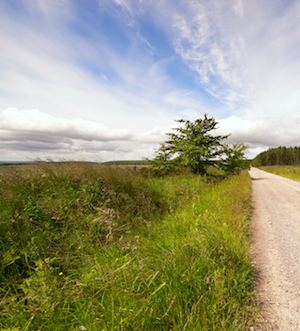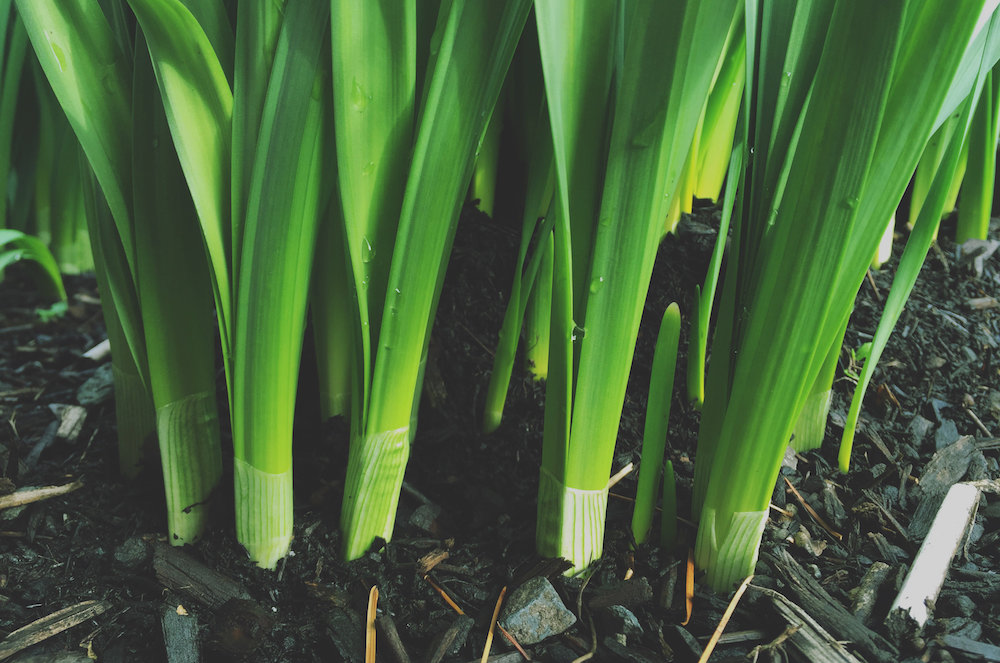Spring is here! For homeowners and avid gardeners, this means it’s time to plan out your landscaping projects. Did you know it’s possible to damage your foundation just by the way you landscape your yard? Don’t let that happen to your home. Homeowners can take steps to protect their foundations from water, root systems, and changing soil composition. Here are 7 landscaping tips to protect your home foundation this season.
1- Grading Your Landscape
Water is not a foundation’s friend. Runoff is one of the most important things to pay attention to as you tend to your garden. Grading your landscape is a great way to protect your foundation from water.
When looking at your home, do you notice your landscape sloping and funneling water away from your home? This slope should be assessed and regraded every year to help water move away from structures. It should be graded at least 6 inches in 10 feet (from the base of the foundation out toward the property’s perimeter).
To check the grading, grab a level and go outside. Place one end of the level where the foundation and ground meet. Keeping the level straight, measure the gap between the ground and the bottom of the level. For a 24-inch level, there should be a 2-inch gap. Now multiply this gap by 5 and you’ll know if your slope is adequate. But don’t stop here! Homeowners often only check the front yard and forget the rest of the perimeter of the house. Check your slope in 2 spots on every side of the home (or more depending on size). If your house is square-shaped, that means checking the slope in at least 8 locations.
Next, measure out 10 feet from where the foundation meets the ground. Walk this line around the perimeter of your home. Do you notice any spots where the ground levels off or slopes toward the home? If so, use soil and a metal-tined rake to regrade the area to slopes down and away from your foundation. Remember, if you are going to add mulch to this area, that too needs to be graded to 6 inches in 10 feet.
2- Improve Your Gutter System & Extensions
The gutter system is the next most important element to protecting your home foundation. If your gutters drop water next to your foundation, what do you think is going to happen to that slope you just worked hard to create? That’s right, runoff from gutters will quickly erode your slope.
Instead, use gutter extensions to push water at least 5 feet away from your foundation. Downspouts can be installed underground to carry water further out. Rain barrels are another great option. These large holding tanks collect gutter runoff. Gardeners use rain barrels to collect and reuse rainwater in their gardens. This also helps conserve water and lower your monthly utility bill.
Downspouts, gutter extensions, and rain barrels are inexpensive DIYs that protect your foundation.
It’s also time to clean out those gutters for water to get through. Gutters should be cleared of dirt, leaves, and other organic matter that builds up. Clogged gutters lead to excess water, overflow, and pooling water near a structure. Check for any holes, gap, or leaks while cleaning your gutters. Patch or replace channels to keep water moving through the entire channeling system.
3- Tree Roots and Foundations Don’t Mix
Mature trees and shrubs provide a lot for a landscape. Shade, a deep root system to prevent erosion, and a nice focal point to add to the natural beauty. Unfortunately, tree roots can slowly wreak havoc on your foundation.
Do you have any large trees within 10-20 feet of your home? Is the tree’s canopy touching the side of your home? If so, you may want to consider removing them. Their root system will keep growing out and may begin shifting your foundation. If removal is not an option, a root barrier could be an alternative solution. Root barriers hinder large roots from growing toward structures or sidewalks.
Follow these tips if you are considering adding trees to your landscape. First, decide what kind of trees to plant, and how how tall and wide they will get. Then determine how far to plant the tree so its canopy and root system do not interfere with your foundation. You could also consider planting trees native to Michigan. Native trees tend to thrive and require less maintenance. They can also provide a natural protection against intrusive insects and pests.
4- Your Soil’s Moisture Content
Remember how water is not a foundation’s friend? Well, there are some exceptions to this rule. Exception occur during those pesky dry spells.
Expansive soil around your foundation could shift, contract during dry spells, and adversely affect your foundation.
A quick fix for maintaining soil moisture is accomplished by watering. Adjust your watering routine to provide uniform moisture all around your home throughout the season. Uniform is a key element for this tip. Soil moisture should be relatively the same around the perimeter of your foundation to ensure even moisture and soil density.
If you have a sprinkler system, check for excess water once a month. Leakage from sprinkler lines and heads may create excess water that permeates expansive soil. This leads to eventual foundation shifting and/or cracks in your walkways. Replace broken heads and periodically look for excess water while your system is running.
Mulch can also help maintain the right amount of moisture. Mulch, or natural wood chips, will create a barrier to retain soil moisture without waterlogging your flower beds. It can also help direct excess water away from the area, thus protecting your grading efforts. The added bonus is, these wood chips will naturally decompose and enrich soil over time. Don’t add edging around the mulch and flower bed. While edging may keep your dirt from running away, it also stops water, creating pools and standing water.
5- Keep Track of Changes
Homeowners are typically aware of how their landscape adapts and changes over the years. It could be by adding a back patio, or removing old shrubs and planting new trees. But what about the changes that occur off your property? Let’s say your neighbor decides to add a sprinkler system in their yard. The extra water and runoff can change runoff routes, and areas of standing water. By being aware of changes in your area, you can adjust your drainage systems and protect your home.
Take a few minutes to track changes your neighbors made to their property. Or changes a construction crew makes to utility lines or underground systems. Then decide what modifications are needed to properly channel water on your property.
6- Don’t Cover up Your Foundation
We all want an attractive yard and create curb appeal. As you plan your garden this year, don’t cover up the exposed portion of your foundation. This exposed section helps air circulation and soil moisture to keep a foundation stable. Covering this part up hinders these processes.
Before planting at the base of your home, clear the foundation so a few inches are exposed. Also recheck your grading if adding soil or mulch to these flower beds. Grading should still funnel water away from the foundation. Leave a gap between plants and the foundation wall so water does not pool close to the wall. It may also be a good idea to plant flowers and greenery that are drought-resistance or do not require a lot of water. These plant types can lower your water bill and ensure too much moisture is not collecting near your home.
7- Create a Swale

Have you ever noticed a ditch or dip running alongside a road? This is a swale! Swales are a naturally occurring landform that collects and guides water from one place to another.
DIYers can create a swale to channel water away from their home while adding natural beauty to your landscape. Decide the path water should follow to a safe drainage area away from any structures.
Next, consider these essential elements for your swale:
- The ditch sides should flare out to extend 3-4 times the depth (like a funnel).
- Water should be directed to a dry well, basin, or rain garden to absorb and drain water.
- Quick draining soil should be used to soak up water as it flows through the channel.
- You may want to line the channel with perforated pipe, gravel, or rocks to help with absorption and higher volumes of water.
- Add plants along the sloping bank will add to drainage and absorption efforts.
- Create a rain garden near the end of the swale to soak up more water.



